
How can you do SEO on your own? What does it take to learn SEO and optimize your website for search engines? How do you know what works so that you don’t waste your time on tasks that are not important for rankings?
This comprehensive DIY SEO tutorial will give you all the answers.
I know from experience that beginners to SEO (Search Engine Optimization) find it difficult to understand the SEO fundamentals.
There are so many terms, rules and practices to learn and implement and if you haven’t done this before, it’s a nightmare.
Open up Google and search for ‘SEO tutorial’ or ‘DIY SEO’, what do you see? Probably a number of guides each of them taking a different approach to SEO and this makes things even more complicated.
What to expect from this SEO Tutorial?
I’ve been doing SEO for more than 18 years now and I’ve learned through a lot of studying, trial and error how to get a website to the top positions of Google. I have done this for my websites and many client websites over and over again.
It’s not an easy job, it’s a lot of work but it’s also rewarding.
I wrote this SEO tutorial to help you get into the right mindset and understand how to approach SEO correctly. It starts from the beginning and takes you step-by-step through the most important aspects of SEO.
After you are done reading this guide, you will have a deep understanding of how to optimize your website for Google and other search engines.
So, if you are new to SEO and don’t know from where to start or where to spend your time and energy, get a cup of coffee, take a deep breath and get ready to teach yourself SEO!
- What is Search Engine Optimization
- How to do SEO on your Own (DIY SEO)
- How long does it take for SEO to work?
- SEO tools and resources
- Key learnings and next steps
What is Search Engine Optimization?
Obviously the first thing you need to understand is what is SEO and why all the fuss about it.
Search Engine Optimization (SEO) is a framework you can follow in order to make your website more visible to search engines. Like other frameworks, it has a set of rules, processes, and guidelines.
SEO has two main objectives:
- First is to make a website friendlier to search engine crawlers so that they can read, understand and add the website to their index.
- Second, to make a website friendlier to the user. This is one area of SEO that is often overlooked, a website that is SEO optimized should also be user-friendly and vice versa.
That’s the basic definition of SEO, which is clear and straightforward.
Now consider this: what happens if all websites are properly optimized according to best SEO practices? How do search engines decide which one to show first, second, third, etc. in their search results?
This is where the fun part begins. For any search term, you can think of, there are hundreds of websites competing for a top place in the results. The websites that are built on a solid SEO foundation win the race.
Black hat VS White hat SEO: Which way to go?
A solid SEO foundation is based on what is known in the industry as ‘white hat SEO’.
White hat SEO is a term used to describe the process of optimizing your website without violating any rules.
To be more precise, Google has a set of guidelines for what you can do and what you shouldn’t do in order to make your website Google friendly.
If you violate any of those guidelines either intentionally or even because you didn’t know about them, you risk getting a ‘Google penalty’ and this means your website will either be removed from Google or your rankings will dramatically drop.
What is black hat SEO?
Black hat SEO, on the other hand, is a term used to describe actions that are not according to acceptable standards and practices.
The purpose of black hat SEO is to manipulate search engine algorithms using various techniques that can trick search engines into ranking a page higher in the results using false signals.
Which way to go?
White hat SEO is the only way to go. Search engines have very intelligent algorithms, spam detection techniques that can track and penalize any websites that are using black hat SEO techniques to achieve higher rankings.
Don’t believe everything you read on the Internet and especially those guides or SEO tutorials that promise you results in a short amount of time. SEO takes time to generate good results and after you do a lot of work.
If you are looking for a fast way to get traffic to your website, get into Google ads, Facebook ads or other paid methods but if you want to build a successful online business, then SEO can guarantee your long term success.
Why is SEO so important?
SEO is important for many reasons but the primary reason is that it can help you achieve higher rankings which means more organic traffic to your website.
Search engine traffic is the most valuable source of traffic for any website and this can lead to more conversions (if you are not sure what a conversion is, read this definition by Wikipedia)
According to statistics, Google receives over three trillion searches per year. Take a moment and think what this number means and how it can change your business if you manage to get your tiny share of traffic from the billions of monthly searches.
Why does it matter to rank high in the search results?
The majority of Google’s organic traffic is distributed among the websites that appear on the first page of Google.
As you can see in the graph below, more than 73% of the clicks go to the first page, and the rest goes to the second and third pages.
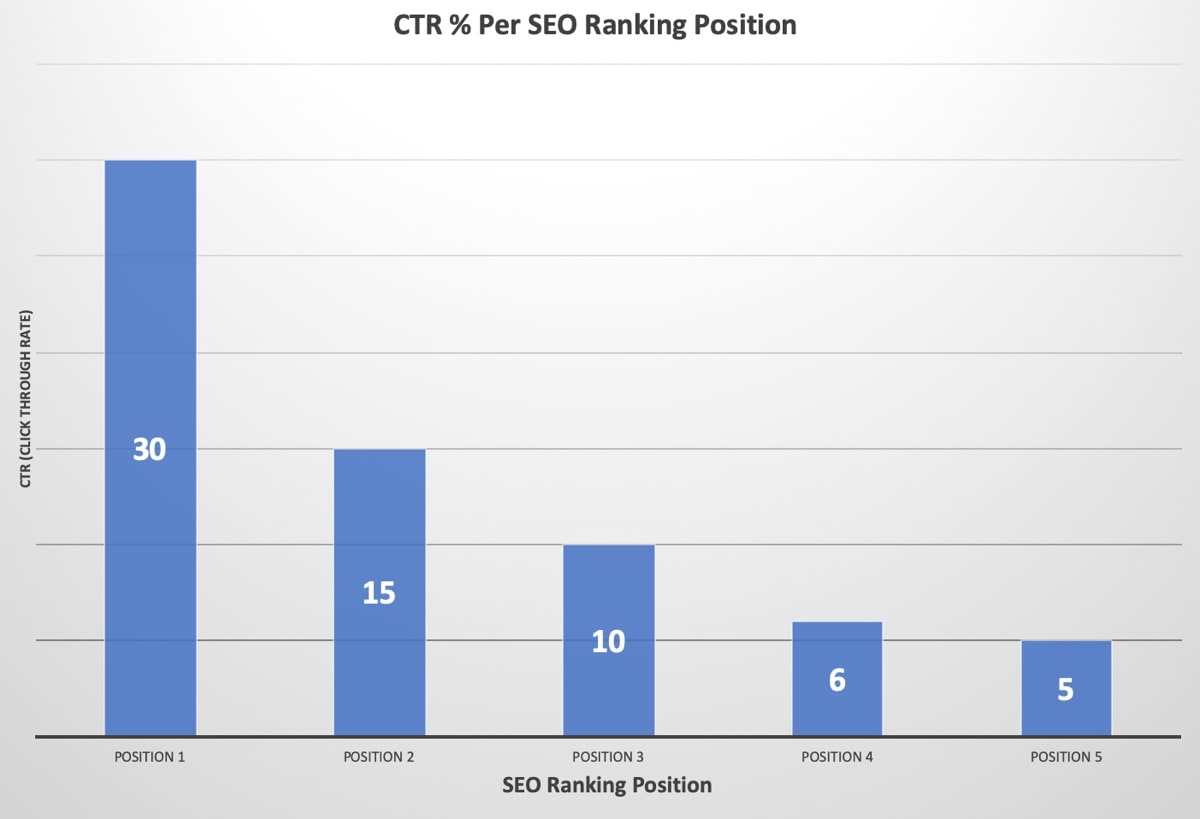
So, if you want to get traffic from Google, you have to rank in one of the top positions or at least on the first page.
How to do SEO on your Own (DIY SEO)
- Understand How Search Engines work
- Domain Names and SEO
- Website Platforms and SEO
- How to Approach the SEO Learning Process
- Work on Your Technical SEO
- Work on your On-Page SEO
- Work on Your Off-Page SEO
Understand How Search Engines work
Now that you have a clear idea of what is SEO and why it is of great importance for your online success, let’s see in more detail how SEO works.
Since Google is the biggest and most valuable search engine, I will use it in the examples below. But, anything that you do to optimize your website for Google is also applicable to the other big search engines.
How does Google Search Works?
Google has a very nice tutorial on how Google works, and if you have never seen this before, I suggest reading it first.
Of course, they don’t reveal all the details of the algorithm but you can get a very good idea of how search works, and this will help you understand the contents of this SEO tutorial better.
In simple words, Google crawlers search the web to find webpages and add them to their index. When a user types in a search query in Google, their algorithms try to find the best possible match and present those pages in the search results.
If there were only a few pages available per search query, then that would not be an issue, Google would show those in the first 10 positions. But, as mentioned above, there are thousands of pages about a particular topic so their algorithm has to decide which is the best match and show those to the user.
There are many factors taken into account by the algorithm but some are much more important than others.
If you are a beginner to SEO, you don’t have to understand all the theory now, it’s too much information and I know that it gets confusing.
What you need to understand is this:
- Google wants to keep its users happy so that they return and perform more searches.
- A Google user is happy when they find what they want in the fastest possible way.
- Google is making a lot of effort to keep low-quality pages out of their index and they continually adjust their rankings algorithms for this purpose.
How search engines work – A detailed explanation (with a video) on how search engines work.
Domain Names and SEO
Before getting deeper into SEO, it’s necessary to understand the impact your website’s domain can have on your SEO efforts.
I know that some of you already have a domain so I’ve separated this section into two parts. The first part is for those who don’t have a domain yet and the second part possible solutions if you already have a website and want to change your domain.
When choosing a domain name for your website, consider the following:
- Choose a domain that is easy to remember and write. Avoid domains with too many words, one to two words is preferable.
- Avoid using hyphens or separators in the domain name. Try to avoid using a hyphen in your domain name. If you must use a hyphen to separate the words, don’t use more than one.
- Exact match domains no longer have an advantage. In the past, if you had an exact match domain i.e. ‘SEOTUTORIAL.COM’ you had an advantage compared to other webpages competing for the keyword ‘SEO tutorial’ but that’s no longer the case.
- Domain extension doesn’t matter. A website can rank well regardless of the domain extension. The most common extensions are .com, .net., .org but if you can’t find a matching name for your website you can safely choose any other extension.
- Self Hosted domains are better. It’s better if your domain is hosted on your own website rather than using a subdomain from any other platform. For example, is better to have ‘mydomain.com’ rather than ‘mydomain.wordpress.com or mydomain.medium.com’.
- Domain age does matter. Older domains have an advantage in SEO over newer domains. It is easier to rank a website that is 5 or 6 years old than a brand new website. Of course, besides the age of the domain, you have to take into account all the factors discussed in this tutorial, but other things being equal, the website that is ‘older’ will rank better than the newer website.
How to start a WordPress Blog – Includes specific guidelines on how to choose the right domain for your website.
What if I already have a domain and want to change it?
If you already have a domain, content, and website with traffic, it is possible to do a rebranding and change your domain without losing your rankings and traffic but you have to follow the migration procedure correctly.
Resources to Learn More
Should you buy an old domain?
You can buy an old domain and gain the advantage of the ‘age of the domain’ but you have to be careful not to buy a domain that was previously penalized by Google.
Can I merge one or more domains to make them stronger?
Yes, you can. If the domains are related and ‘clean’ from Google penalties, you can safely merge them together and create a ‘stronger’ website.
Website Platforms and SEO
After you select a good domain for your website, the next step is to choose a platform i.e. the software to use to develop your website and a server (hosting provider) to host it.
This is not an area to spend too much time or effort, once you make a good selection from the beginning then you don’t have to worry about it and you can concentrate on other more important tasks.
While there are many options available, the best website platform in terms of SEO is WordPress.
WordPress now powers more than 35% of all available websites on the Internet and has a number of features that can help you build an SEO Friendly website.
It is easy to use and with a few tweaks, you can make it even better.
You can read my best SEO practices for WordPress article for more details and step-by-step guides.
In terms of hosting, not all providers are equal when it comes to SEO awareness, the wrong choice of hosting provider can negatively impact your SEO efforts.
Make sure that you choose an SEO friendly hosting such as Bluehost or KnownHost.
Learn How to Approach the SEO Learning Process
The best way to approach SEO is step-by-step. The whole process can be broken down into 3 main types:
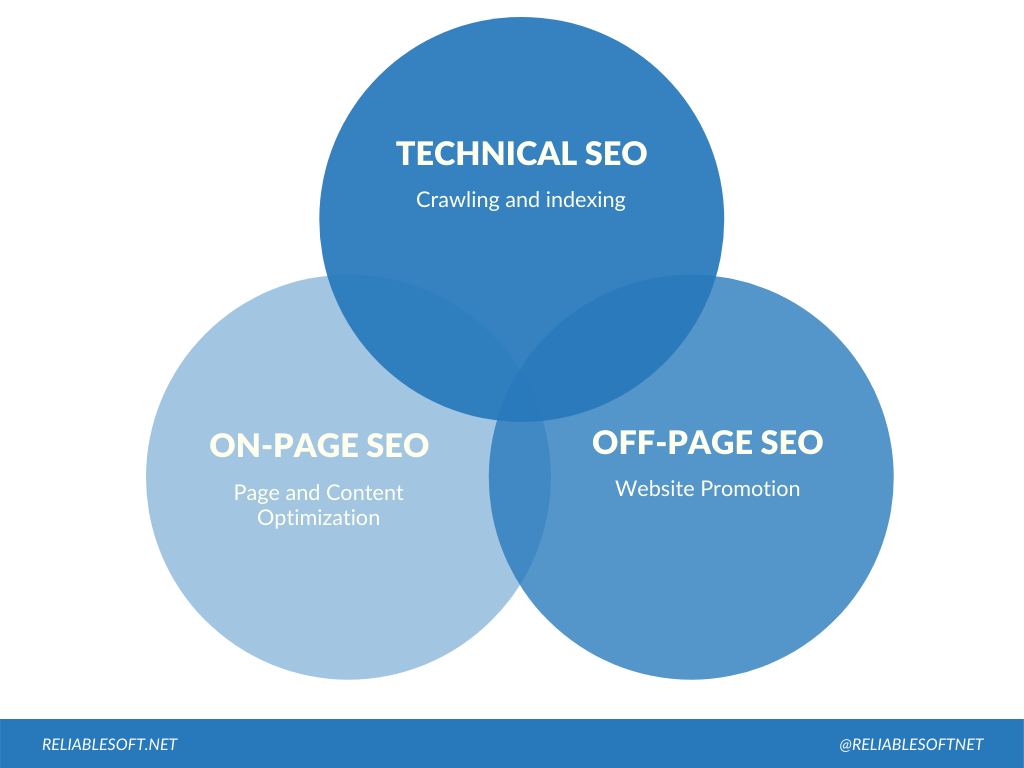
- Technical SEO – How to make sure that search engines can access your website without any issues.
- On-Page SEO – What kind of content to publish on your website and how to structure / setup your webpages so that search engines can read and understand them.
- Off-Page SEO – Link Building and other techniques to promote your website on the Internet and get more exposure.
For best results, you should follow the steps in the order outlined above i.e. start technical SEO, then On-Page SEO and then Off-Page SEO.
Work on Your Technical SEO
Technical SEO has one purpose, to make sure that search engines can discover the important webpages of a website and be able to access them without any issues.
To achieve this, you need to optimize a number of things, the most important are:
- SEO Friendly Site Structure
- User and XML Sitemap
- Bing Webmaster Tools and Google Search Console
- txt Optimization
- 404 Page Optimization
- PageSpeed and SEO
- Mobile-Friendly Websites and SEO
SEO Friendly Site Structure
The structure of your website is very important. A good and simple site structure will make the job of search engines and users easier and this has many benefits for SEO and usability.
To make an SEO friendly site structure, consider the following:
Group your content into logical categories that make sense. Everything starts with the home page but after that, you should think of a logical hierarchical structure for the rest of your content.
Don’t over-engineer but keep it as simple as possible. Avoid having too many categories or subcategories since SEO wise, these don’t offer much value because of duplicate content issues (we will talk about this later).
Don’t use more than three levels when creating your site hierarchy. Don’t hide your content from search engines and users but make discovery easy.
Use SEO Friendly URLs. Your URLs can contain “-” but not underscores or any other unnecessary information. Keep them clean and easy to understand.
For example, let’s assume that you have a blog about Digital Marketing. Your blog posts can be grouped into one of these categories: SEO, Social Media, PPC, Content Marketing.
Your Website structure can look like this:
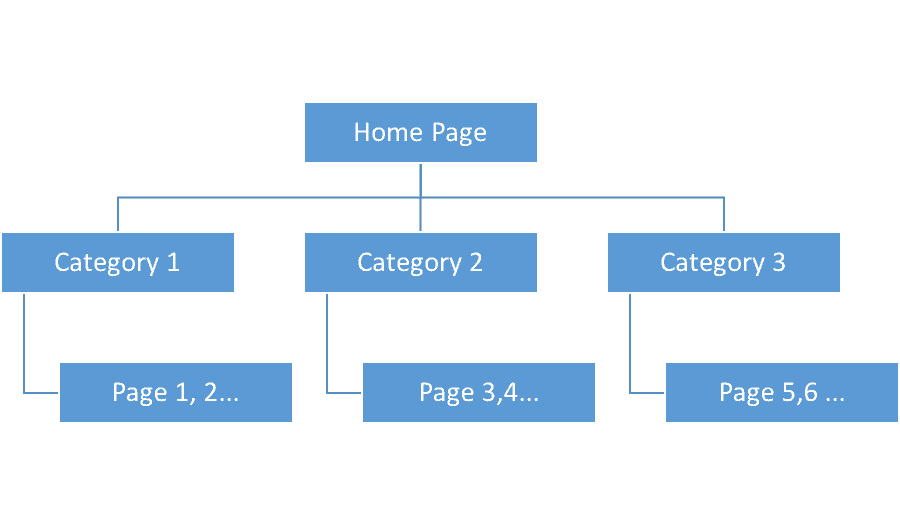
and the URLs like this:
- Sample Category URL: example.com/SEO and example.com/Social
- Sample Blog URL: example.com/my-seo-blog-post
- Sample Page URL: example.com/digital-marketing-services
User and XML Sitemap
Google recommends that you provide users with a simple sitemap page that will contain links to all the important pages of your website (or to all pages if it’s possible). You can add this to your main menu or footer.
Besides helping with user navigation a sitemap page is also used by Google during the crawl process to discover more pages from your website.
Another better way to inform search engines about your website pages and structure is to create an XML sitemap and submit it to Google and Bing.
An optimized XML sitemap should list all pages that search engines should know about and not pages that have duplicate content or provide no value to their users.
Submit Sitemap to Google – Three ways you can use to submit your XML to Google.
Bing Webmaster Tools and Google Search Console
One of the ways to check what search engines know about your website is through webmaster tools. Both Google and Bing have made these tools available to their users and they are free to use.
You can access Google Search Console here and Bing webmaster tools here.
Webmaster tools can give you a lot of valuable information regarding your website. You can see your ranking position for different keywords, how many links point to your website, how many pages you have in the index if there are any errors during the crawl process and many more.
Resources to Learn More
- Bing Webmaster tools tutorial – A tutorial for beginners to Bing webmaster tools
- How to use Webmaster tools – A guide on how to get started with webmaster tools for ALL search engines.
- What is Google Search Console – An introduction to Google Search Console for beginners.
- Add website to Google Search Console – How to add and verify your websites with Google Search console.
Robots.txt Optimization
Robots.txt is a file that exists on the root directory of every website and can be used to give instructions to search engines on which directories/files of the website they can crawl and include in their index.
Normally you will need to deal with robots.txt once and if everything is ok you don’t have to change it again.
To make things easier for you, there is a robots.txt tester function in Google Search Console which you can use to ensure that you don’t accidentally block search engines from accessing your website’s pages.
404 Page Optimization
What is a 404 page? The 404 page is shown to the users if they click a link on your website that leads to a non-existent page.
What is the importance of a 404 page for SEO? Remember that SEO is about usability and giving users a dead end is not the best approach.
Your 404 page needs to be useful and provide users with alternative ways to find what they are looking for.
SEO Tips for beginners – Includes examples of SEO optimized 404 pages.
PageSpeed and SEO
One of the ranking signals that is not kept a secret by Google is website speed. Websites that load fast have a competitive advantage over websites that are not so fast.
This means that if everything else is the same, Google will rank higher websites that are faster than slower.
So, even if page speed is a comparative signal and not a direct signal, there are many business benefits from having a fast loading website.
Numerous statistics show that users are not willing to wait for a website to load for more than 3-5 seconds (especially on mobile) and there is also a direct coloration between website speed and conversions.
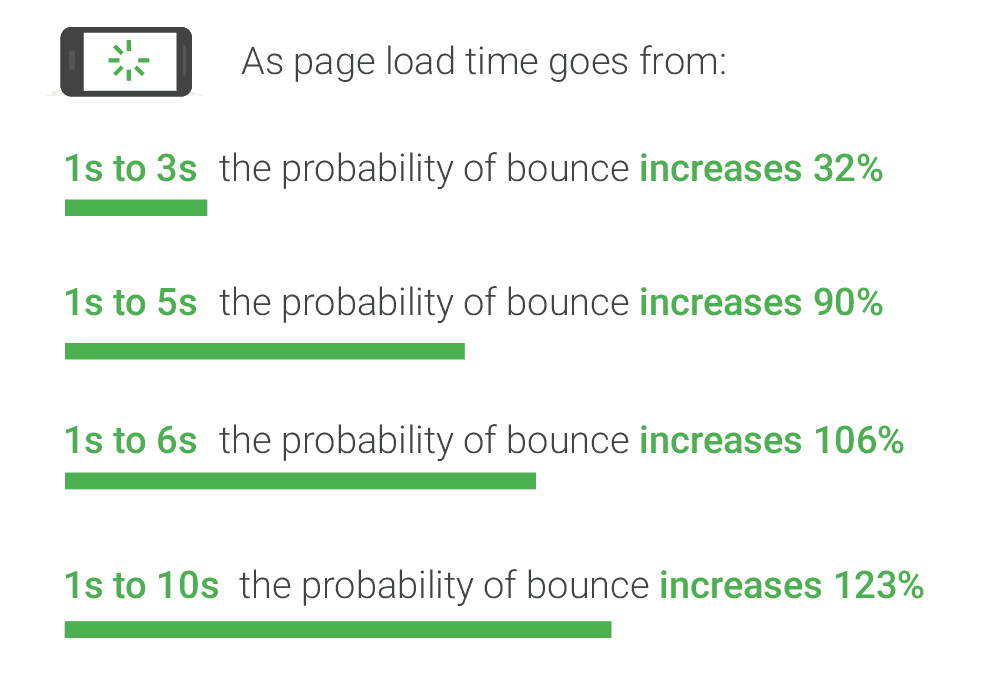
To cut a long story short, part of your optimization process should be to improve the loading speed of your website as much as possible.
It’s a technical topic and you might need the help of a developer to do the necessary changes but consider this as an investment you have to do.
If you want to get your hands dirty, here is the guide to follow: How to increase your pagespeed.
Mobile-Friendly Websites and SEO
Last but not least, your technical SEO checklist should also include how good or bad your website performs on mobile.
Google confirmed that mobile searches are now more than desktop and this simply means that if you are not mobile, you cannot reach a large percentage of your potential users.
What is a mobile-friendly website?
A website is considered mobile-friendly when:
- It can be viewed on a mobile device without having to zoom-in and without having to use horizontal scroll bars to access the content.
- It passes the Google mobile-friendly test
- It loads fast (preferably more than 3 seconds)
- It allows the users to perform the same actions as the desktop but using their mobile devices.
To ensure that their mobile users are happy, Google introduced a mobile-friendly algorithm change in April 2015 (also known as mobilegeddon), that excludes from their mobile index websites that are not mobile-friendly.
Work on your On-Page SEO
Once you’re done with optimizing for technical SEO, the next step is to start working on your on-Page SEO.

On-Page includes the following tasks:
- Page Title Optimization
- Meta Description Optimization
- Heading Tags and Page Formatting
- SEO Copywriting
- Internal linking
- Rich Snippets and Schemas
- SEO for Multi-lingual websites
Page Title Optimization
A page title (<title>) is the first element that both users and search engines ‘see’ when reading or crawling a page.
Best practices for SEO friendly page titles:
- Each page of your website needs to have a unique page title
- Page titles should accurately describe the page content
- Page titles are shown in the search results so they should be attractive and help users understand if the page is relevant to their search so that they can click to visit the page.
- Page titles should be brief. In terms of length, it is suggested to go up to 60 characters so that they can fit in the Google search results.
How to SEO Optimize your page titles?
While the above best practices are all related to SEO, there is one more step to take to further optimize your page titles and this has to do with the use of keywords.
Keywords in the page title are important for both users and search engines. Users can easily spot the keywords in the title (sometimes they are even made bold by search engines) and this encourages them to click the link and visit the page.
Search engines ‘read’ the title and try to figure out if this is a page that can potentially satisfy the ‘intent of the user’. If this is the case, then they continue to examine the page content and other factors before they return the results to the user.
What you should do to win both users and bots is to ensure that your page titles include the keywords you are targeting.
For example, if you are writing a post targeting the keyword ‘SEO Tutorial’, then your page title should include this keyword, hence the title of this post.
As an additional note, there is no need to add your website name in the title, this is added automatically by Google (if it does not exist).
If you feel that you need to have your website name as part of the title, then move it at the end and not the beginning.
In the first parts of the title include the important elements (i.e. keywords).
Have a look below at how Google SEO’s optimized the title of Google AdSense. Notice how they blend keywords (make money online) in the page title.

Difference between a page title and H1 Tag – Beginners to SEO tend to confuse the title with the H1 tag and this guide will explain all the differences.
Meta Description Optimization
The page meta description (<meta name=”description” content=“your description goes here”), is equally important. All of your website pages (including the homepage), should have a unique description that accurately summarizes the page’s actual content.
Best practices for crafting good meta descriptions:
- Avoid using generic descriptions or terms like ‘This page is about…’ but concentrate as to why someone should visit your page.
- Include keywords in the description but don’t do keyword stuffing.
- Keep your descriptions up-to 160 characters.
Pro Tip: Unlike the page titles, meta descriptions are something you can safely change after a page is indexed.
What you can do is check the description displayed by Google for several terms related to your page and make any changes to the text to make it more appealing to the user. While doing this, you can also ‘spy’ on your competitor’s descriptions and see what kind of message they try to pass to their users.
As a side note, have in mind that Google may decide not to show your description in their results but they may show text from the page if they believe that this is a better match to the user’s query.
The description from the Google AdSense page (see image above), is a great example of how you can merge keywords and page summary together.
Resources to Learn More
- Meta Description Length – the ideal length of an optimized meta description (study)
- Meta Description and SEO – More tips on how to SEO optimize your meta descriptions.
Heading Tags and Page Formatting
Besides the titles and descriptions that are seen by bots and shown in the search results, other factors that directly impact SEO are heading tags and page formatting.
As a general rule, headings should be used to guide users on the important sections of a page and thus make a page easier to read and user-friendlier.
Headings can also help search engines understand the content of a page. When reading the HTML of a page they can identify tags like H1 and H2 and use the text within those tags to figure out the meaning of the page’s content.
Headings should include keywords and have a hierarchical structure. For example, the first heading on the page should be the H1 tag (this is usually used for the page title) and the subsequent headings can be H2 or H3.
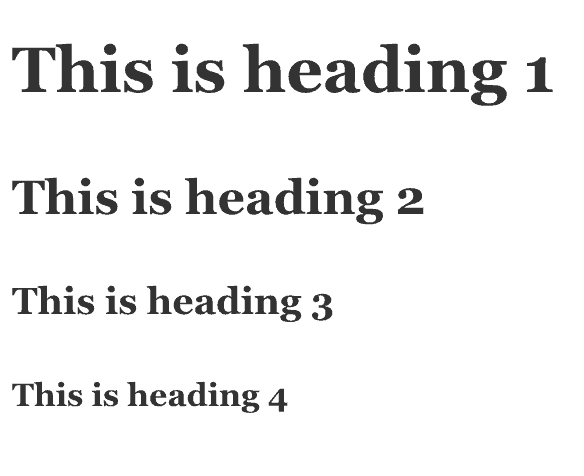
As an example look at the headings of this article. It’s a long post so I have used H1 for the post title, H2 for the main sections and H3 for the subsections.
SEO Copywriting
Maybe you have read many times in the past that content is king, but it is still true. Content is the most important element of any website.
Your content needs to be of high quality and also provide answers/solutions to the user intent and keep the search engine user happy.
If this is not the case then whatever techniques you use (either white hat or black hat) to increase the visibility of a website in Google search, sooner or later they will all fail.
What is SEO Friendly Content?
SEO Friendly content is content that provides value to the user by answering a question or providing insights about a certain topic and at the same time can be understood by search engines.
What is a keyword?
To be able to create SEO friendly content, you first need to have clear in your mind what is the meaning of keywords and what is their role in the SEO process.
A keyword is anything that users can type in the search box, that has a significant value. A keyword may consist of one or more words.
SEO Keywords are used by search engines to understand the user’s intent and satisfy their search request in the best possible way.
Consider the examples below, keywords are shown in bold:
- “Marketing”
- “DIY SEO Tutorial”
- “What is SEO”
- “What is the best Chinese restaurant in Florida”
Notice that some of the keywords are very broad (Marketing) and some consist of 2 or more words, known as long-tail keywords (best Chinese restaurant Florida).
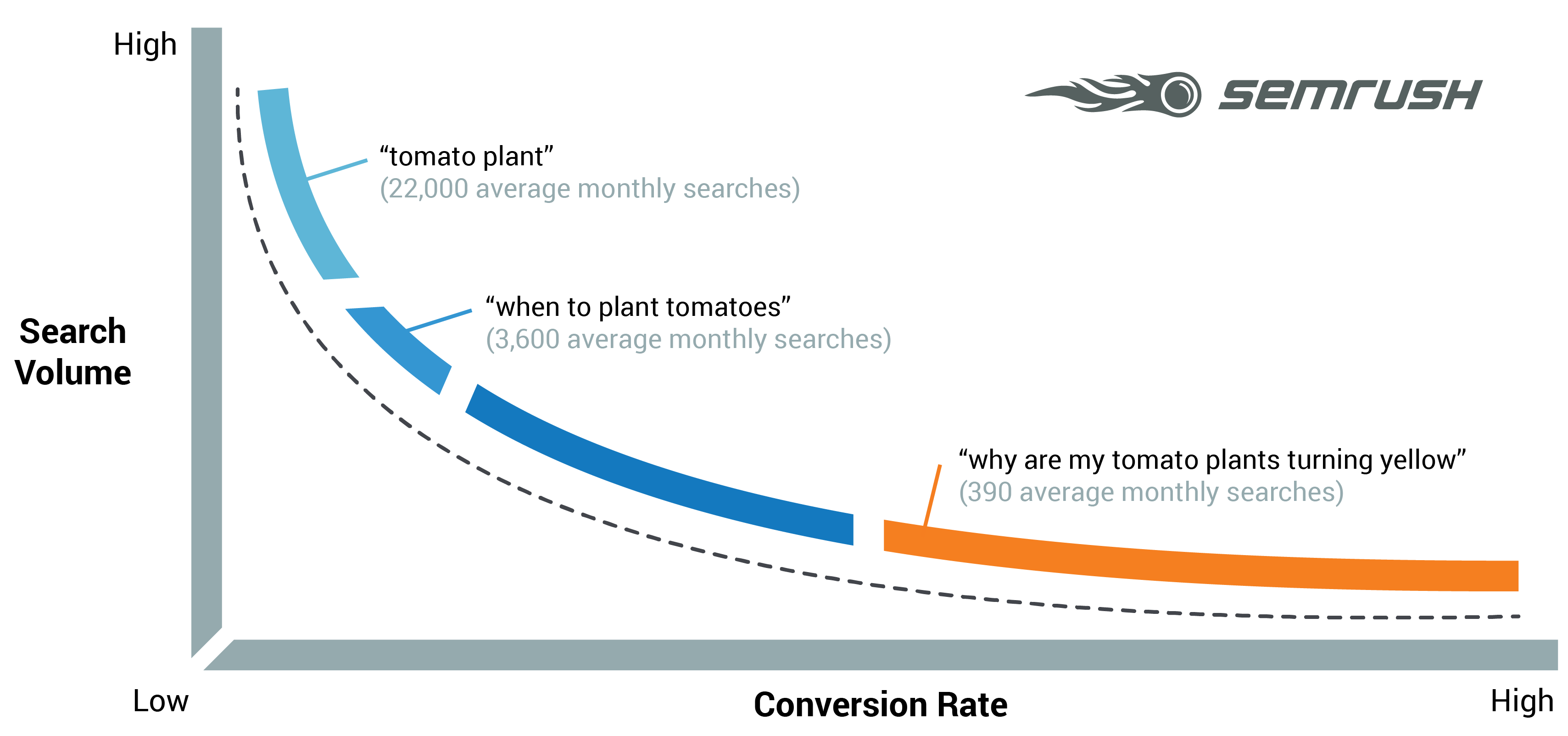
What is the role of keywords in SEO?
Everything online starts with a keyword, whether it is website content, user search query or Google Ads.
Search engines during the indexing process are trying to match keywords with web pages that can potentially be used as ‘results’ for those keywords.
Your job as an SEO is to make sure that your web page content includes those keywords (or variations) so as to help search engines index your pages correctly.
Does this mean that if you have a page full of keywords, you will get higher rankings?
Not at all. Keyword stuffing or content that exists for the sole purpose of keeping search engines happy, cannot achieve high rankings.
What you need for high rankings is high-quality SEO Friendly content.
High-Quality SEO Friendly Content
Take a minute and review what is perceived as high-quality by Google.
Notice how much value they give to usefulness, credibility, and engagement of the content.
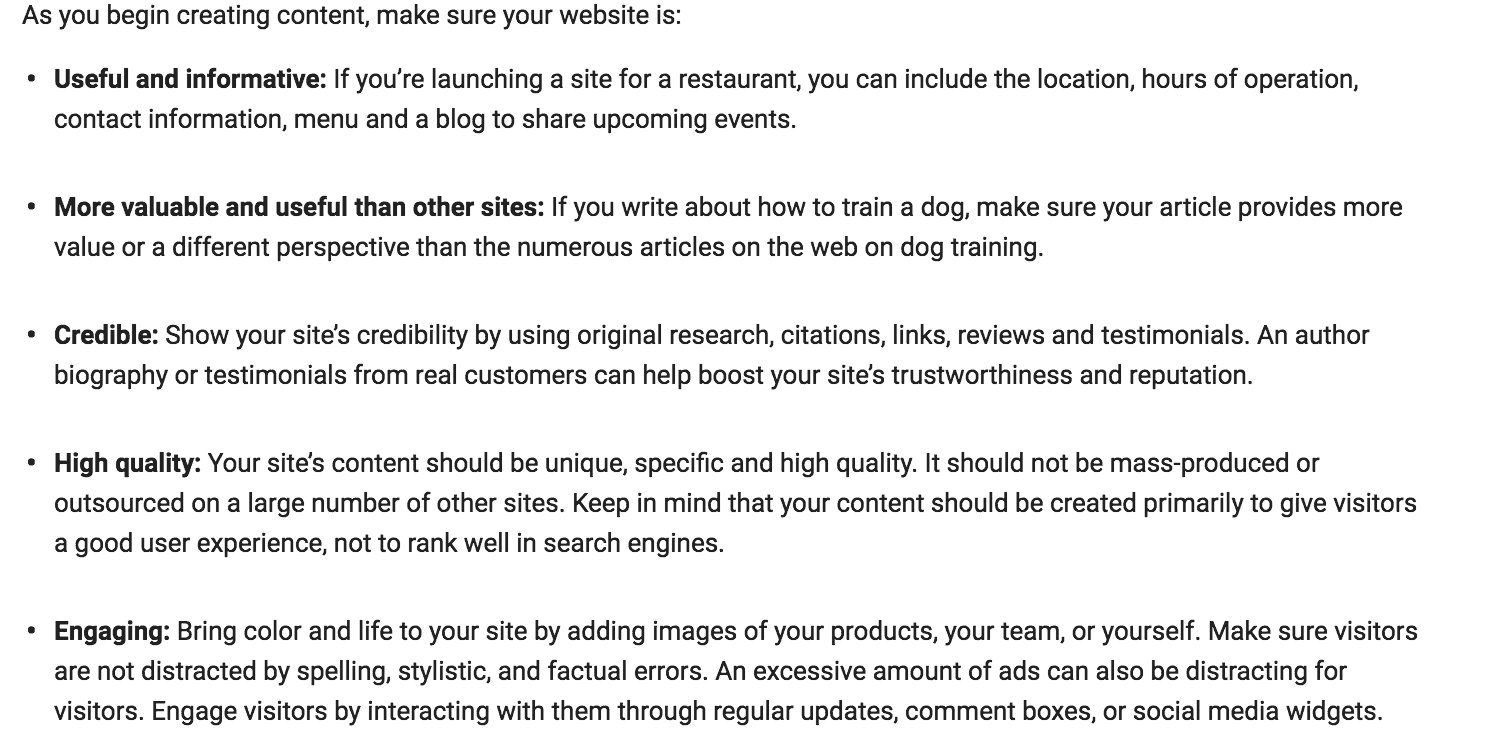
Start thinking about how to create content that matches these characteristics but at the same time includes keywords people may use in the search process.
In addition to the above, how you present your content matters. It’s not enough to have good content that is SEO friendly but you need to take other factors into account.
Resources to Learn More
- Keyword Research Best Practices – Tips to follow while looking for keywords to use in your content
- Keyword Research Courses – The best courses you can follow and master the secrets of keyword research.
Internal linking
What is internal linking? Adding links to your pages that point to other pages within your website.
It’s a pretty straightforward concept but sometimes overlooked by webmasters and this is an SEO mistake.
What is the purpose of internal links?
Internal links serve 2 major purposes:
1st they aid navigation since they point users to other pages of your website to read more details about a certain topic and 2nd they help search engines discover more pages from your website and also understand the context of your pages better.
Internal linking best practices for SEO
- Add internal links where it matters and not for the sake of doing it.
- There is no limit in the number of internal links you should have per page but don’t overdo it. Longer posts are more likely to have more internal links that 300-word posts.
- For internal links to have some value, they need to be in the main body of the page. Links in the sidebar or footer are not so valuable (for on-page SEO purposes).
- Use optimized anchor text with your internal links. Unlike external links, internal links can include keywords in the anchor text, there is no penalty for doing so.
- Don’t add the ‘nofollow’ tag to your internal links. All internal links should be followed.
Rich Snippets and Schemas
One of the modern ways to give more visibility to your content and improve it’s google rankings is by using rich snippets and schemas.
What are schemas and why you should care?
Structured data markup is a formal way to describe your content to search engines. One of the challenges search engines face when crawling a page is understanding the context of a page and schemas can help them a lot in this direction.
As stated by Google, through structured data markup you make your content eligible to appear in rich results and knowledge graph cards.
In real terms, this means eligibility to rank in position 0 of Google (above the normal search results) and this has a number of benefits.
Structured data markup can be implemented by adding a set of tags to your HTML code or through a JSON script.
Resources to Learn More
- What is Schema Markup – An introduction to schema markup for beginners.
- Rich Snippets Best Practices – Tips to optimize your content for Google rich snippets.
SEO for Multi-lingual websites
Many websites have their content displayed in different languages and while this is normal and expected when it comes to SEO you need to have a few things in mind:
- Don’t use automatic translators to translate your content into different languages. Your content has to be of high quality and this means readable, without grammar, structural or spelling mistakes.
- If you want to make your content available to other languages, then do it manually on a page by page basis.
- To avoid any issues with duplicate content you need to do some SEO configurations and in particular, make use of hreflang meta attribute.
The hreflang attribute is a way to tell Google that your content is available in more than one language.
Google will use this information and serve the right content to your users (depending on location and language).
Hreflang implementation is an advanced topic and requires technical knowledge to apply the necessary settings to your website.
If you have or thinking of making your content available into more than one language, then make sure you read this guide from Google.
Work on Your Off-Page SEO
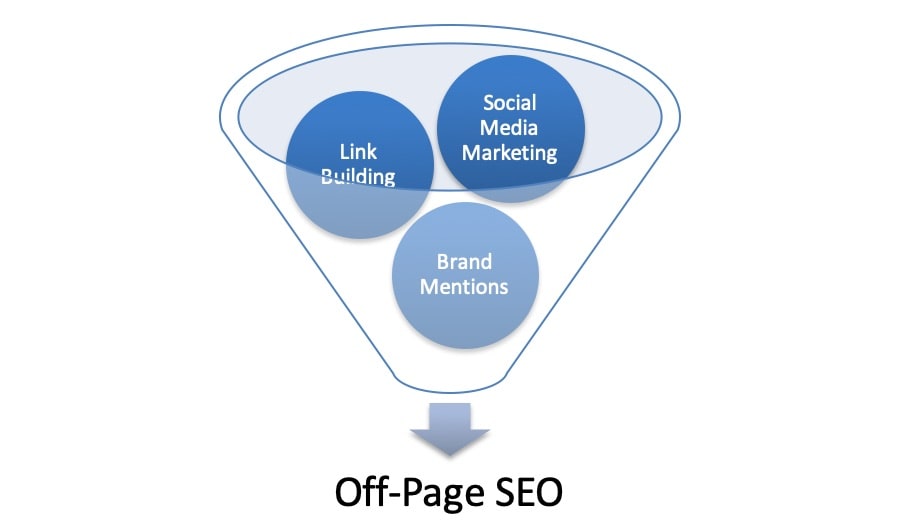
No SEO strategy is complete without off-page SEO. Beginners to search engine optimization should understand that a complete SEO action plan has to include off-page SEO tasks.
While On-page SEO has to do with optimizing your website and content, off-page SEO is about promotion and how you can get more exposure and attention to your website.
Why is off-page SEO important?
To understand the importance of off-page SEO, consider the example mentioned above where a number of websites are targeting the same keywords and all of them have got on-page SEO right, which websites will achieve higher rankings?
The answer is simple, the websites that have done a better job in off-page SEO will get higher rankings and traffic.
What is off-page SEO?
Off-page SEO has to do with methods and techniques you can use to convince search engines that your website is better for their users than the other websites.
In the SEO world, this is translated into incoming links, hence the term ‘link building’ has been associated with SEO.
Why are links important?
Google founders when they wrote the first ranking algorithm, they decided how to actually rank pages in the Google search results.
Besides taking into account all the factors discussed above, they also came up with a brilliant idea: the websites that are referenced (linked to) by other websites are more likely to be more important and useful to users so they deserve a higher ranking.
That’s an oversimplified version of the initial Google algorithm but the main idea holds until today. Websites that have incoming backlinks from other websites are more likely to rank higher and get more traffic from Google compared to websites that don’t have many links pointing to them.
Over the years’ webmasters and SEO’s tried to manipulate this rule by building links for the sole purpose of making the Google algorithm happy (black hat SEO) and this let into many low-quality sites to reach the first positions of Google.
This, in turn, forced Google to add more rules to its algorithm to take into account more quality factors when assessing the quality of a link.
What is a good link?
A good link that can help your website increase its rankings has the following characteristics:
- It is a natural link – This means that the link is naturally added by a webmaster because they believe that linking to your website will add value to their content and help their users read more details about a certain topic.
- It is coming from a related website – If you have a website about SEO, it’s natural to have links from websites that deal with digital marketing, social media, etc. but it’s not natural to have links pointing from fashion type blogs or other unrelated topics.
- It’s coming from a website trusted by Google – Not all websites are equal in the eyes of Google. Google loves high-quality websites and a link from such a website is welcomed.
- It’s not part of an exchange or paid scheme – Links that are paid for or exchanged (you link to my website and I link to yours) can get you into trouble (see below).
- It’s not coming from a low-quality website – In general, websites that have little or no original content and are full of external links with no incoming links, do not offer any value to the user, are considered by search engines as low-quality websites.
What is a ‘bad link’?
A ‘bad link’ does not have the characteristics of a good link. Usually, bad links are either paid for or injected into low-quality articles for the sole purpose of tricking search engine algorithms.
It may be a surprise to beginners but there are a number of websites out there that exist for the sole purpose of publishing low-quality content with outgoing links.
What is the problem with that? A lot of bad links pointing to a website can lead to Google penalties and in simple words, this means loss of rankings, traffic and Google trust.
What are Google Penalties?
In order to protect the integrity and maintain the quality of their search results, Google has introduced two types of penalties, manual and algorithmic.
A manual penalty occurs when the Google Search Quality Team imposes a penalty on a website because it violated Google’s webmaster guidelines.
When a website is under a penalty, it loses all (or part) of its rankings. Usually, the webmaster can see the reasons that led to a penalty by viewing the ‘Manual Actions’ report of Google search console.
To get back to the Google index the webmaster must submit a ‘reconsideration request’, which is manually reviewed by the search quality team. A successful reconsideration request does not mean that the website will return to the pre-penalty rankings.
An algorithmic penalty occurs automatically and is a result of bad practices and violations that are checked automatically by the Google algorithm. To recover from an algorithmic penalty, you have to make the necessary changes and wait for an algorithmic refresh.
Google penalties have animal names like Panda, Penguin, Hummingbird and you can read all about them here.
Is my website penalized? – How to check if your website is under a Google penalty.
How do you get quality links for your website?
So, good links are important for a website’s SEO success, but how do you get these links without taking any risks?
This is something I explain in more details in my SEO Courses as it is a huge topic on its own but to give you some ideas and pointers, consider this:
- Don’t go after links that are too easy to get. Hard to get links are usually more valuable.
- Only purse links from websites that are better than yours both in terms of traffic, quality of content and reputation.
- Don’t believe anything you read about ‘private networks’ or other schemes that exist for the sole purpose of giving links to any type of website.
- Use guest posting wisely, don’t spend your energy and time on guest posts that nobody will read.
- Use social media to get your content noticed. Social media shares/likes etc. are not considered as a direct ranking factor but you can use the exposure you can get from social networks to position your content in front of the people that are more likely to interact with it (comment, share, etc.) and link to it.
In addition to the above:
Don’t be afraid to link out to other valuable and high-quality websites. How is linking out related to getting more links?
Webmasters tend to check their statistics, referral traffic and links on a regular basis and if they notice traffic or a link from a website they will check it out and they may return a favor.
To those of you that think that this is ‘link exchange’, it’s not. First of all, the other webmasters are not obliged in any way to return the favor and second this is a method proposed by Google in one of their ‘Audience Engagement Guides’.
Also, another more direct way to make sure that webmasters you’ve linked out to, will notice your content is to email them and mention to them that you like their work and added a link in your articles.
You don’t have to ask for anything in return but it is certain that a percentage of them will appreciate this action and link back to you.
How long does it take for SEO to work?
Whether you do SEO on your own or hire an agency to do it for you, it is important to understand that SEO will not generate the expected results overnight.
As I explained in a previous article, SEO takes time to work because any changes you do to your website will have to be evaluated by Google and then taken into account.
So, any fixes that you do today to make your website SEO friendly, it may take months until these are properly ‘read’ by Google (and other search engines) and used to improve your ranking positions.
The same is true with link building. When a new link is detected by the Google crawlers, it has to be passed through an evaluation process before it is awarded as a positive ranking signal.
Nobody can give you an exact number of how long it will take to increase your traffic after you do SEO work on your website but as a general rule of thumb, it may take 3 to 6 months to see the merits of your work.
Thus it is very important to be patient and not lose your focus. Keep working on improving your SEO, content and user experience and sooner or later you will be awarded for your hard work.
People that are not patient enough tend to get disappointed and quit before they see any results but those people that work consistently for a long period of time, are those that succeed in the end.
SEO Tools and SEO Resources
To manage SEO correctly you need to use tools. There is a lot of data to analyze and a lot of metrics to monitor which makes it impossible to do everything manually, so you need some sort of automation through software tools.
There are hundreds of free and paid SEO tools in the market and because of my job role, I have tested many of them.
I don’t like having to log in to a lot of different tools to do my work so after evaluating a number of them, I decided to enroll in tools that can give me diverse functionality at a reasonable monthly price.
SEM Rush: This is my favorite SEM (search engine marketing tool). I use it on a daily basis for both my SEO and PPC needs. It’s a great and easy to use tool with a number of functions but the nice thing about SEM Rush is that it is continuously updated with new features so you don’t have to look for other choices.
Key Learnings and Next Steps
SEO and Digital Marketing, in general, are disciplines that change all the time. Every week there are new changes to algorithms and practices that directly or indirectly affect SEO but the basic ingredients of SEO are the same for the last 20 years.
If I had to summarize these in one sentence, I would say that SEO is about making your users happy and satisfying their ‘intent’ through high-quality content and easy to use websites.
What I tried to include in this comprehensive SEO tutorial, is pointers to the most important aspects of SEO so that you get the full picture of what you have to do to get better rankings in Google.
As I mentioned in the introduction, it’s a lot of work and it’s not a once-off task.
When you decide to enter the world of SEO you should have in mind that you are entering a competition with hundreds of people that have the same goals as you. Your competitors are trying to make their content and websites better aiming to rank higher and if you are to win this race, you have to do a better job than them, in all aspects.
Those that have the courage to do this, are able to get enough search engine traffic to run their businesses online without the need for advertising or worrying about how to get new customers.
Those that look for shortcuts and don’t have the patience or willpower to do all the work, they give up and quit.
Finally, if you are stacked and don’t know what you are doing wrong or what your next step should be, consider our SEO Audit Service and get all the answers you need by removing the uncertainty and guessing.
I hope you enjoyed reading this tutorial and hopefully, you now have a better idea on how to optimize your websites for SEO.
If you have any questions let me know in the comments below and I will do my best to answer them.
The post The Ultimate DIY SEO Tutorial For Beginners (Free) appeared first on reliablesoft.net.
